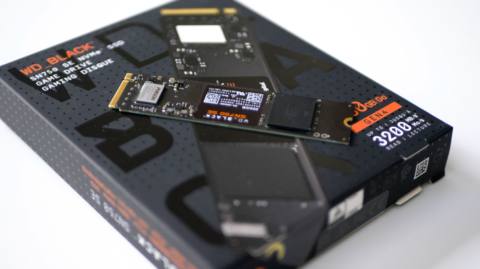
Sony’s latest system software update for PlayStation 5 went live last week, bringing with it the ability for all users to make use of the M.2 storage expansion bay for NVMe drive upgrades. The 667GB internal drive limitation for PS5 apps is now a thing of the past and games can be run from virtually any PCIe Gen 4.0 drive installed into the console. Sony has a series of recommendations, but what happens when you install a drive that doesn’t meet the required spec? In fact, what happens when you augment your PS5 with the absolute slowest PCIe Gen 4.0 drive money can buy? Enter the Western Digital SN750 SE.
‘Cheap and cheerful’ perfectly sums up the SN750 SE. Prices start from just £56 for the 250GB model, which is the slowest model in the range (higher capacity versions are faster). Its low spec nature poses challenges for meeting PS5’s requirements in a couple of dimensions. First of all, there’s the recommendation for 5500MB/s of sequential read bandwidth (Mark Cerny actually specified 7000MB/s in the Road to PS5 presentation) and here, the SN750 SE only manages a paltry 3200MB/s – just 58 percent of the required transfer rate.
The second issue concerns the lack of onboard cache on the SN750 SE. It’s what’s known as a DRAM-less design with Western Digital instead tapping into what’s known as Host Memory Buffer. Anandtech has a good write-up on the tech, but essentially, HMB uses a PC’s system RAM for caching to boost performance. Based on Sony’s FAQs, PS5 – quite understandably – doesn’t support HMB, and there are warnings of performance degradation if you use one of these drives within the console. The SN750 SE also lacks a heatsink, again recommended by Sony, but I resolved this by acquiring a third party aluminium from Amazon.
